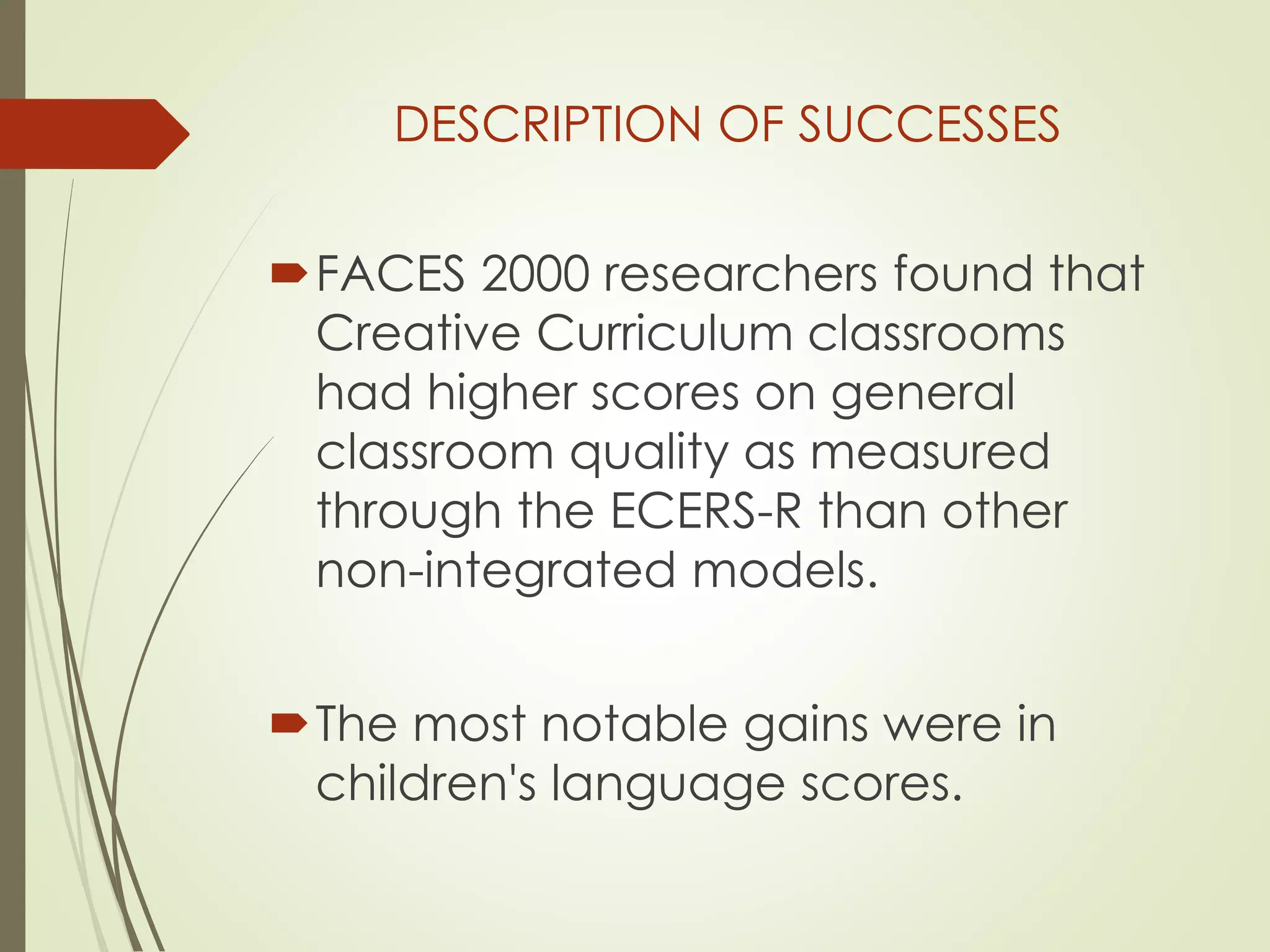The Creative Curriculum model was founded by Diane Trister Dodge in 1988 and is based on the theories of theorists like Piaget, Erikson, Maslow, and Vygotsky. It focuses on five key beliefs: constructive play, social competence, relationships as the foundation for learning, linking curriculum and assessment, and family partnerships. Research studies have found it to be an effective model, with children in Creative Curriculum classrooms showing greater gains. Professional development is available to support ongoing learning about implementing the curriculum. The environment is divided into interest areas to support learning across domains.






































































